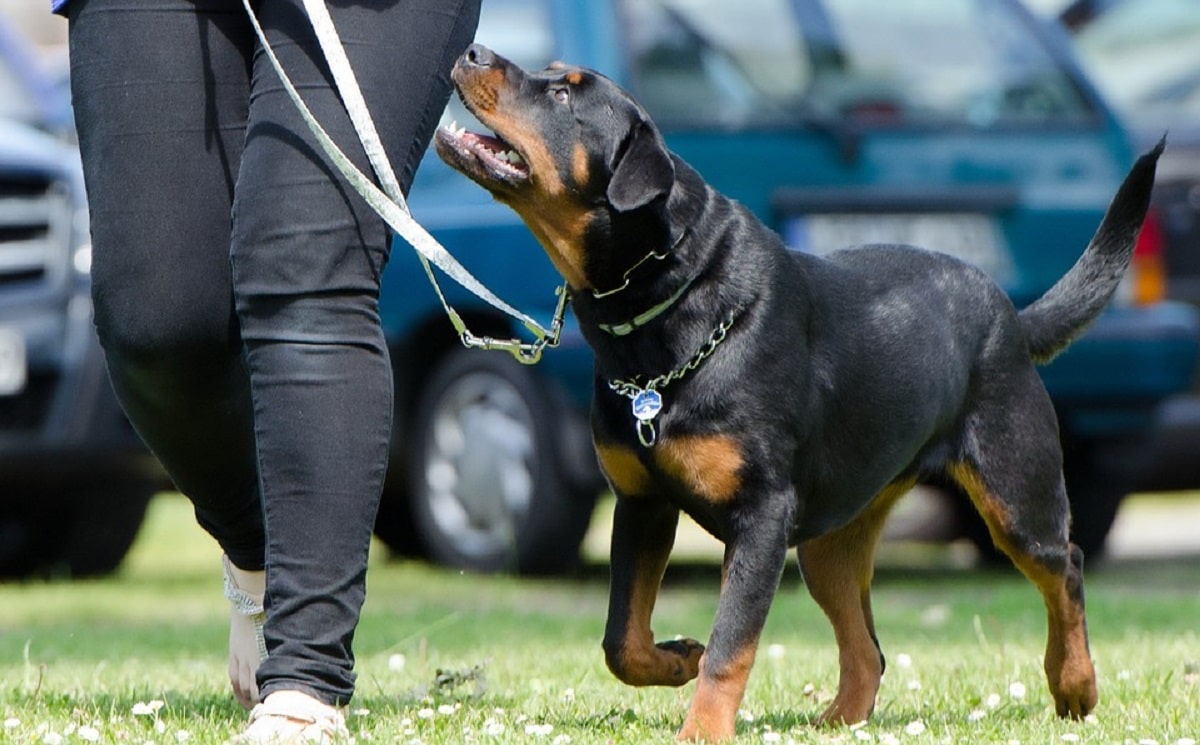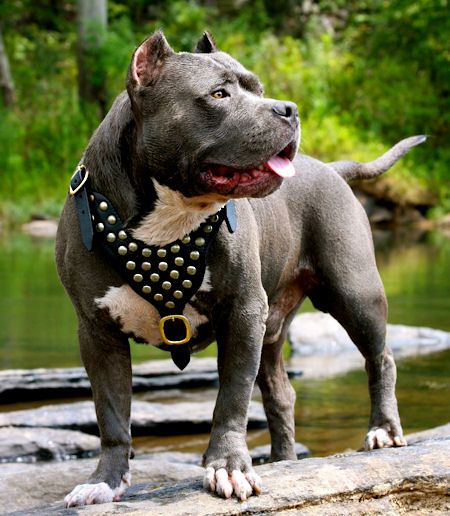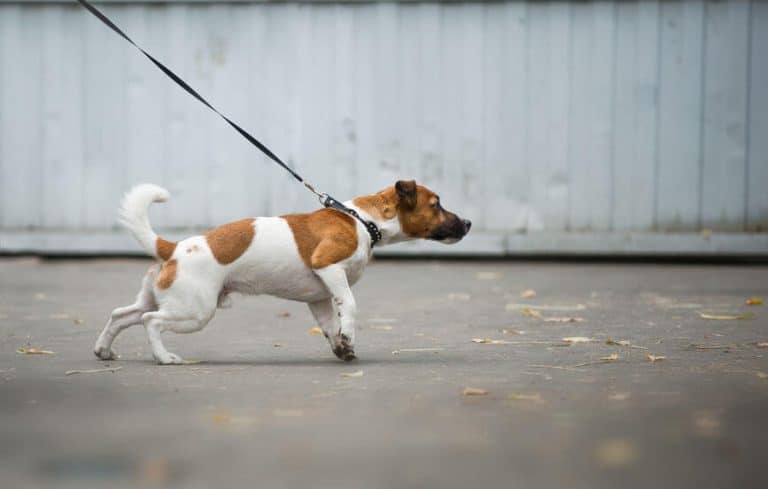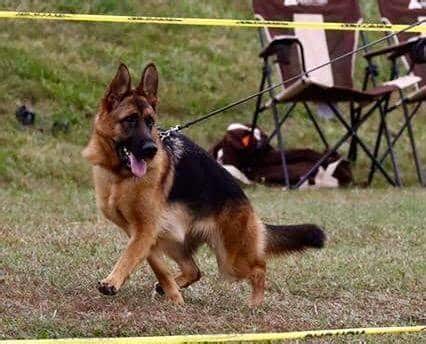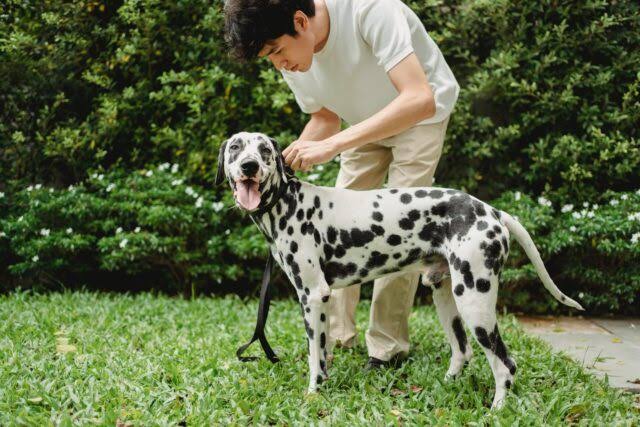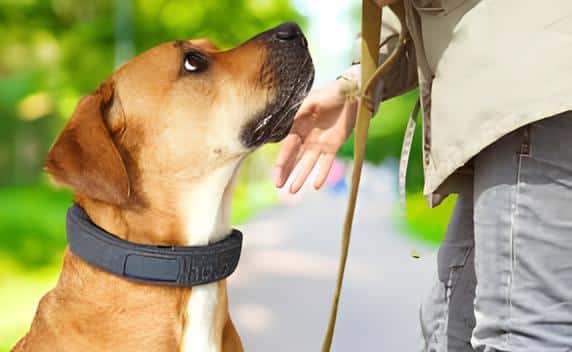Is a Prong Collar Suitable for Your Dog’s Training Needs?
Are you confused about how you should place a prong collar on a dog? Well, we got covered.
But have you ever thought about what a prong collar is? It is a tool used for training dogs to behave on a leash.
It’s not like a regular choke collar because instead of metal links, it has prongs that pinch the loose skin around a dog’s neck when it tightens.
The idea is to mimic how a dominant dog gently nips or bites to establish control. It’s important to use prong collars correctly and with the guidance of a trainer.
However, they are not just for everyday walks and should only be used temporarily for training.
Let’s delve into the detailed discussion about a prong collar, the proper placement of the prong collar on a dog, and how it works.
What is a Prong Collar?
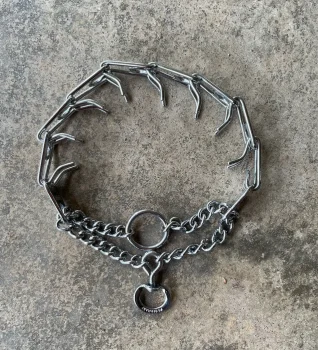
Prong collars are special collars for training dogs. They have small, not sharp metal points that press into the dog’s neck when it tightens.
This helps the dog understand that a certain behavior is not okay. It’s important to use the prong collar only for short periods during training, not as the main collar.
It’s a tool to teach your dog how to walk nicely on a leash without pulling.
How to Place a Prong Collar on a Dog
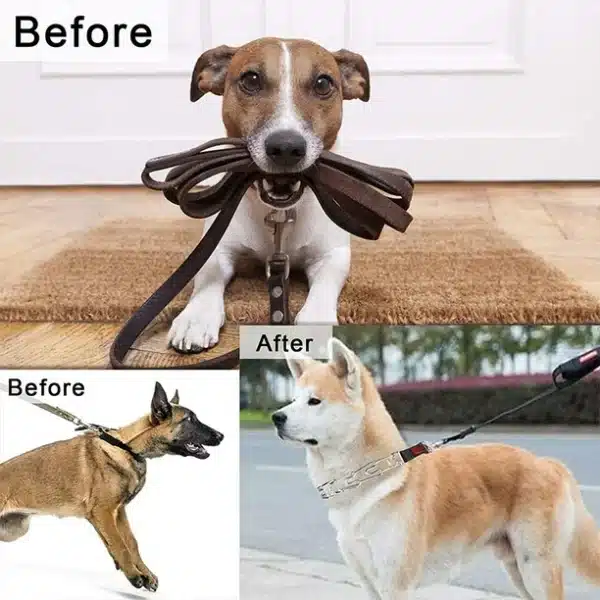
Below are the 4 basic steps for placing a prong collar for safety and helpfulness.
Step 1: Put the collar on the dog’s neck, right behind its ears and under its jaw. If you place it lower, it won’t work well.
Step 2: Attach the leash behind the dog’s ears, with the links facing up. Avoid fastening the collar on the side of the dog’s throat or below its jaw.
Step 3: Remove any extra links to ensure the collar fits well and doesn’t hang. A loose collar can hurt your pet or let them escape, causing them to get scratched by the collar.
Step 4: If the collar is too loose, it might not work properly. You can adjust the metal prongs or take one out to make the collar fit your dog perfectly.
Different Types of Prong Collar
Different varieties of prong collars are available, but a few have been listed below.
1. Choke Collars
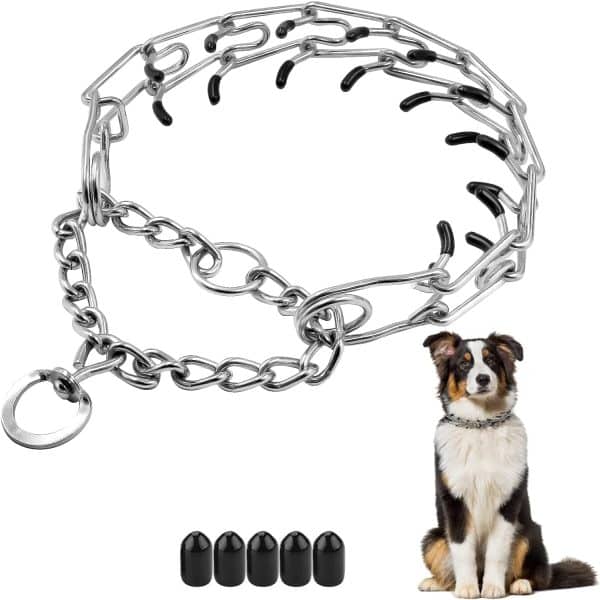
Choke collars are made from high-strength chrome-plated stainless steel. These are completely adjustable and suitable for small, medium, and large dogs.
A dog pinch collar helps train dogs without punishing them. It applies gentle pressure to guide them, focusing on teaching rather than scolding them.
Using this collar, you can easily correct your dog’s behavior with a simple pull to protect their neck and airway.
2. Flat Leather Collar
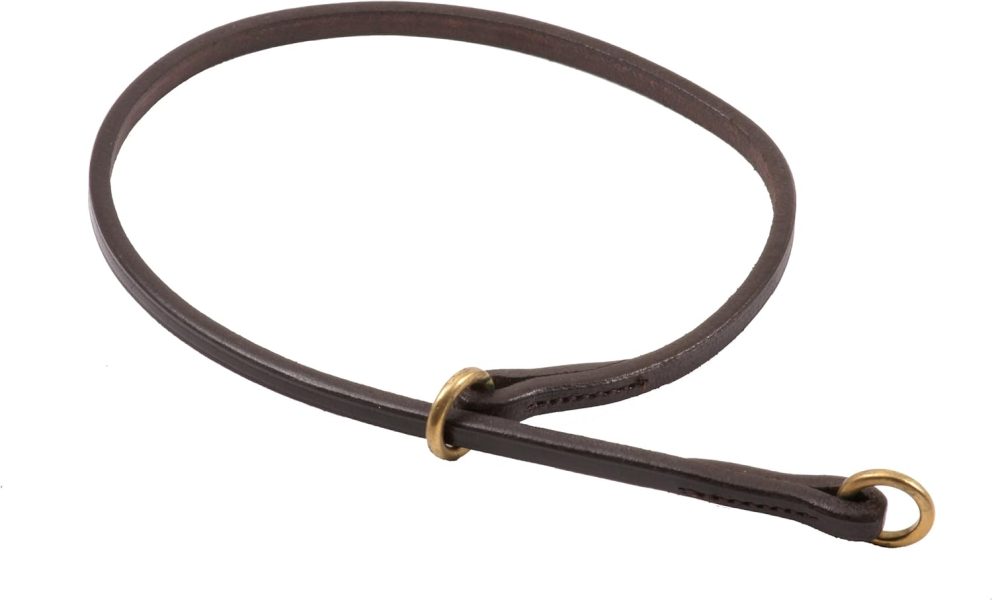
This flat leather collar is made with the finest flat leather, which is quite soft and durable. It is suggested for dogs with sensitive skin.
However, it is perfect for regular walks. And it is also preferable while training, showing, and much more your dog.
The flat slip-style dog training collar made of soft leather is gentle on your dog’s skin and tough and long-lasting. Plus, it looks good on your furry friend.
3. Martingale Collars
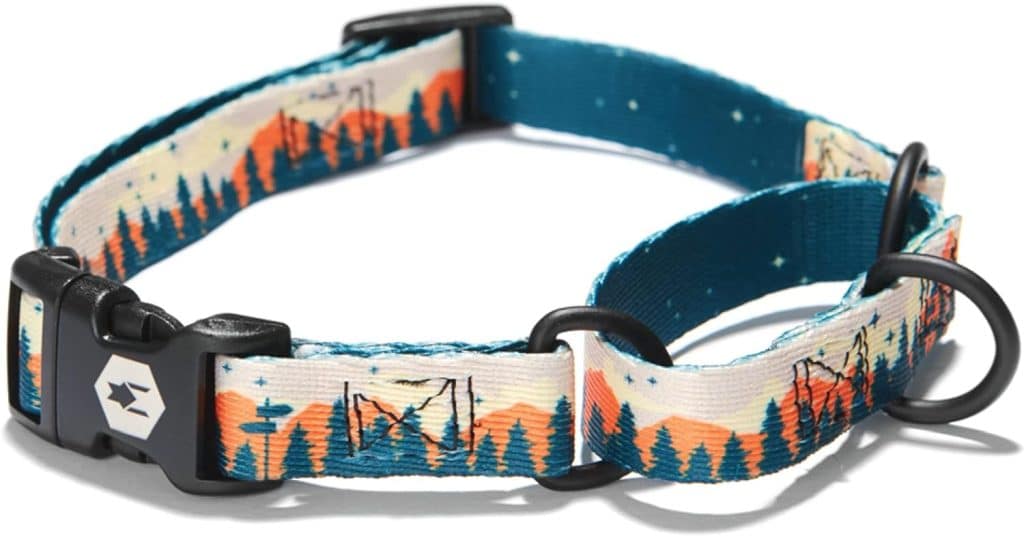
Martingale dog collar is built to last using strong and easy-to-clean material. It has tough nylon buckles, and the ends are carefully cut to prevent fraying.
The heavy-duty steel D-rings and welded seams ensure your leash stays securely attached.
This collar works for both big and small dogs. It’s resistant to UV and stains. Martingale collars are useful for training and keeping control of your dog.
4. Gentle Leader Collar
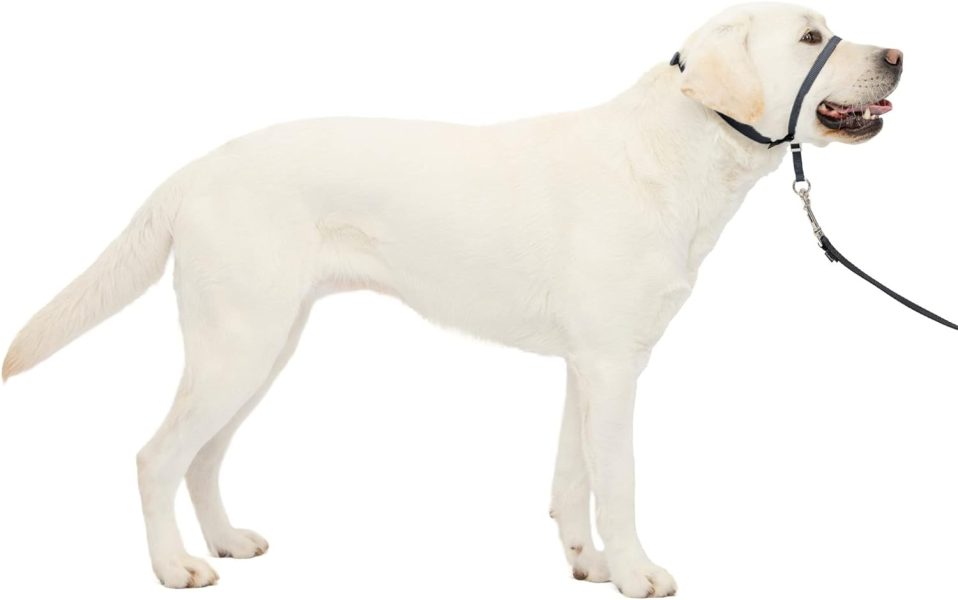
Gentle Leader dog headcollar is designed with a few straps to keep your pup cool, and it’s made of strong nylon with a comfy neoprene nose loop.
It’s unsuitable for dogs with short snouts, like pugs or bulldogs. Vets suggest it to stop your dog from pulling during walks, making it the best way to improve your walks together.
Ultimately, it helps to teach your dog better leash manners and makes outings more enjoyable.
Benefits of Using Prong Collars
Well, a prong collar has multiple benefits, but a few have been listed below.
- It can be helpful for training dogs because it pretends how a mother dog corrects her puppies by nipping at their necks.
- When used correctly, prong collars let you control the pressure, allowing you to adjust the correction based on your goals.
- These collars are especially useful for addressing aggressive or hyper behavior in dogs. Another method to stop negative behavior is using calming treats.
- Using both the collar and treats together may give the best results for some dogs.
Safety Tips While Placing a Prong Collar on a Dog
- Never tie a prong collar to punish or teach discipline to your dog.
- Avoid using prong collars with rubber tips on your dog.
- Do not leave a dog unattended or tied with a prong collar on.
- Give your dog short tugs when your pet is busy with unwanted behavior.
Are Prong Collars Ethical?
The most effective way to train your dog is by determining the best methods. Training approaches should be adapted based on your dog’s age and behavior. What works for one dog may not work for another.
Now, let’s talk about prong collars. We can’t say definitively whether it’s the right choice for your dog.
In this section, we’ll discuss the ethics of prong collars and why they might or might not be effective. However, the goal is to help you make an informed and balanced decision about using one.
1. Proper Usage
Prong collars can be risky if not used correctly. Some dog owners have succeeded, but others have accidentally hurt their dogs.
It’s not as simple as just putting on the collar and expecting your dog’s leash-pulling problem to be fixed.
It would be best if you were careful about choosing the right size of the prong collar and putting it in the right place on your dog’s neck.
Remember, a prong collar is not meant for everyday use; it’s a tool for short-term training. Also, it’s not suitable for puppies.
So, always prefer using it only if you have the proper knowledge.
2. Anxiety
Before using any training tool, consider how it might affect your dog. Prong collars can make your dog uncomfortable, especially if not used correctly. You might accidentally put pressure on them even when they’re not misbehaving.
The confusing part is that your dog might not know what is causing the discomfort. They could think it’s because they pulled on the leash, or it might be something else nearby, like a child or a barking dog.
So, using a prong collar might confuse your dog and make them anxious.
3. Tool for Training
Even though the tool looks a bit scary with its metal spikes, it wasn’t made to hurt your dog. It’s designed to copy the gentle nip a mother dog gives her puppies when they’re naughty.
The collar, when used correctly, puts pressure around the neck. But, if not used right, it can end up causing pain and discomfort, and that’s where the issues and arguments about its use come from.
Can Puppies Use a Prong Collar?
No, not! Using prong collars for puppies is never a good idea. Using prong collars for puppies above 6 months old is always advisable.
Remember that a prong collar is always the last option after every training. Mostly, puppies do not need this as they learn things quite easily.
So, training them at home with good practice sessions is better to avoid using prong collars.
Are Using Prong Collars Cruel?
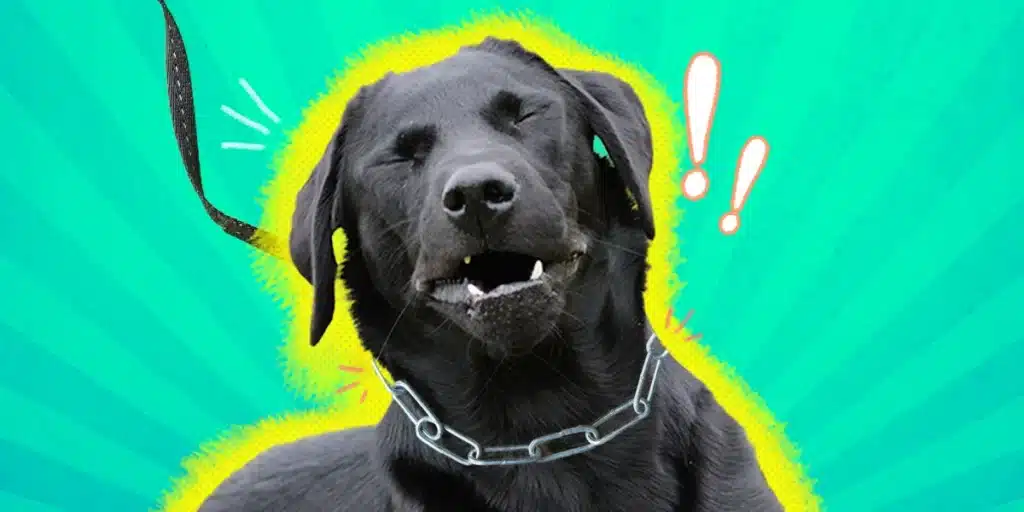
No, using a prong collar is not cruel as long as you use it properly. However, if you know how to adjust the collar and fit it exactly, there won’t be any issues while using it on your dog.
So, ensure you have the basic knowledge and correct idea of using the prong collar effectively without harming the dog. Because in the end, it is your loverly open who will suffer a lot.
Summing It Up
Overally, a prong collar can be a helpful tool for training dogs to walk nicely on a leash when used correctly. But it’s important to know that it’s neither for puppies nor for all dog breeds.
It’s like a backup plan for dogs that keep pulling despite other training efforts.
Don’t always use the prong collar; it’s just for teaching. After your dog learns, switch to a regular collar.
To prevent any injury, always seek proper knowledge on the correct usage of a prong collar. Also, never leave the prong collar on when you’re not watching; it could cause problems if your dog gets stuck in it.
Let your dogs stay happy without fear of being affected by prong collars!
Frequently Asked Questions
Should Prong Collars Be Tight or Loose?
Usually, prong collars should be tucked high up, just under the jawline, behind the ears; however, as it is a very sensitive area, a little tight might be felt.
It should not be loosely tied on the neck as the risk of slip-over changes is high.
Why are Prong Collars Bad?
Prong collars are bad as they scratch or punch the skin around the neck. However, some electronic collars also create the same with an often redness and irritation under that area.
How Long Should a Dog Wear a Prong Collar?
Generally, a dog can wear a prong collar for long hours. More than one hour might cause anxiety. But at the same time, it is also preferred during training.
Ensure the dog is habituated with the collar before to make the session easier and smoother.

